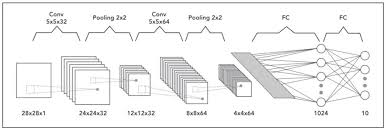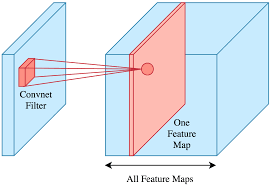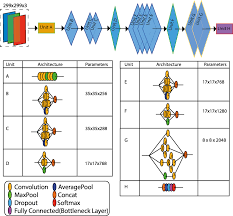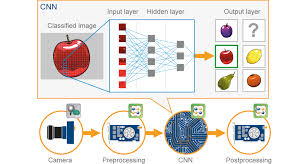The Power of Convolutional Neural Networks
Convolutional Neural Networks (CNNs) have revolutionized the field of artificial intelligence and machine learning, particularly in the realm of image recognition and computer vision. CNNs are a type of deep neural network that have proven to be highly effective in extracting features from visual data, making them essential for tasks such as image classification, object detection, and facial recognition.
One of the key strengths of CNNs lies in their ability to automatically learn and identify patterns and features within images. This is achieved through the use of convolutional layers, which apply filters to input images to detect various features like edges, textures, and shapes. By stacking multiple convolutional layers followed by pooling layers, CNNs can hierarchically learn more complex features from the input data.
Another important aspect of CNNs is their parameter sharing scheme, which allows the network to efficiently learn from a small number of training examples. This is particularly beneficial for tasks with large datasets, as it helps prevent overfitting and improves generalization performance.
CNNs have been instrumental in advancing technologies such as autonomous vehicles, medical image analysis, and facial recognition systems. Their ability to process visual information with high accuracy and speed has made them indispensable in a wide range of applications across various industries.
As researchers continue to explore new architectures and techniques to enhance the capabilities of CNNs, we can expect even more impressive breakthroughs in computer vision and image processing. The future looks bright for convolutional neural networks as they continue to push the boundaries of what is possible in artificial intelligence.
Understanding Convolutional Neural Networks: Key Questions and Answers
- What is a Convolutional Neural Network (CNN)?
- How do Convolutional Neural Networks work?
- What are the applications of Convolutional Neural Networks?
- What are the advantages of using Convolutional Neural Networks for image recognition?
- How can I train a Convolutional Neural Network for my specific task?
What is a Convolutional Neural Network (CNN)?
A Convolutional Neural Network (CNN) is a type of deep neural network specifically designed for processing and analyzing visual data, such as images and videos. CNNs are characterized by their ability to automatically learn and extract features from input images through the use of convolutional layers. These layers apply filters to detect patterns like edges, textures, and shapes, enabling the network to recognize complex visual patterns. CNNs have revolutionized tasks like image classification, object detection, and facial recognition due to their efficiency in handling large-scale visual data and their capability to hierarchically learn intricate features from images.
How do Convolutional Neural Networks work?
Convolutional Neural Networks (CNNs) work by utilizing a series of convolutional layers to extract features from input data, particularly images. These convolutional layers apply filters to the input data, detecting patterns such as edges, textures, and shapes. By stacking multiple convolutional layers and pooling layers, CNNs can learn hierarchical representations of features within the data. The network then uses fully connected layers to classify the learned features and make predictions. Through this process of feature extraction and classification, CNNs are able to achieve high levels of accuracy in tasks like image recognition and object detection.
What are the applications of Convolutional Neural Networks?
Convolutional Neural Networks (CNNs) have a wide range of applications across various fields due to their remarkable ability to process and analyze visual data. Some common applications of CNNs include image classification, where they can accurately categorize images into different classes or labels based on their visual features. Object detection is another key application, allowing CNNs to identify and locate specific objects within an image. CNNs are also used in facial recognition systems for identifying individuals based on facial features. Additionally, CNNs play a crucial role in medical image analysis for tasks such as identifying tumors in medical scans. Overall, the versatility and effectiveness of Convolutional Neural Networks make them indispensable in numerous real-world applications that rely on visual data processing and analysis.
What are the advantages of using Convolutional Neural Networks for image recognition?
Convolutional Neural Networks (CNNs) offer several key advantages for image recognition tasks. One of the main benefits is their ability to automatically learn and extract features from images, eliminating the need for manual feature engineering. CNNs use convolutional layers to detect patterns such as edges, textures, and shapes within images, allowing them to capture intricate details and nuances that are crucial for accurate image recognition. Additionally, CNNs leverage parameter sharing and pooling layers to efficiently process visual data, making them highly effective in handling large datasets and improving generalization performance. Overall, the advanced capabilities of CNNs make them essential tools for achieving high accuracy and efficiency in image recognition applications.
How can I train a Convolutional Neural Network for my specific task?
Training a Convolutional Neural Network (CNN) for a specific task involves several key steps to ensure optimal performance. First, you need to gather a labeled dataset that is relevant to your task, ensuring that it includes a diverse range of examples that the network can learn from. Preprocessing the data by resizing, normalizing, and augmenting images can help improve the network’s ability to generalize. Next, you will need to design the architecture of the CNN, including the number of layers, types of layers (convolutional, pooling, fully connected), and activation functions. Training involves feeding the data through the network multiple times (epochs), adjusting the weights and biases through backpropagation to minimize the loss function. Fine-tuning hyperparameters such as learning rate, batch size, and optimizer choice is crucial for achieving optimal results. Regular monitoring of training progress and validation accuracy is essential to prevent overfitting and ensure that the CNN is learning effectively for your specific task.




